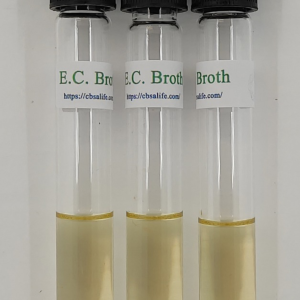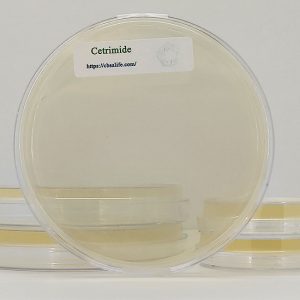Hektoen Enteric (HE) Agar is a modrately selective medium used in qualitative procedures for the isolation and cultivation of gram-negative enteric microorganisms, especially Shigella, from a variety of clinical and nonclinical specimens.
INTENDED USE
Hektoen Enteric (HE) Agar is a moderately selective medium used in qualitative procedures for the isolation and cultivation of gram-negative enteric microorganisms, especially Shigella, from a variety of clinical and nonclinical specimens.
SUMMARY AND EXPLANATION
Through the years many media have been devised for the isolation of enteric pathogens. These various formulations have differed in their degree of selectivity for the pathogenic species. Some were designed to isolate and differentiate Shigella species whereas others were formulated for the selective isolation of the Salmonella. Media that isolated a broader spectrum of enteric pathogens were less inhibitory to members of the nonpathogenic intestinal flora.
Hektoen Enteric Agar was developed in 1967 by King and Metzger of the Hektoen Institute in order to increase the frequencies of isolation of Shigella and Salmonella organisms when compared with their recovery on other media frequently utilized in clinical laboratories at that time. This medium is considered to be moderately selective, and is particularly useful in the isolation of Shigella species. The present formulation differs from that of the original in that sodium desoxycholate has been eliminated and the concentration of bile salts is reduced. Additionally, the peptone concentrations have been increased in order to offset the inhibitory effects of the bile salts.
HE Agar is currently recommended as one of several plating media for the culture of Enterobacteriaceae from stool specimens. Foods containing poultry, eggs or dairy products are the most frequent vehicles for foodborne salmonellosis, and a variety of procedures have been developed using Hektoen Enteric Agar as part of the multi-step procedure to isolate Salmonella.
PRINCIPLE
The selective nature of Hektoen Enteric Agar is due to the incorporation of bile salts in the formulation. These substances inhibit gram-positive organisms but also can be toxic for some gram-negative strains.
This medium contains three carbohydrates, lactose, sucrose (saccharose) and salicin, for optimal differentiation of enteric pathogens by the color of the colonies and of the medium adjacent to the colonies. The lactose concentration is higher than in many other media used for enterics in order to aid in the visualization of enteric pathogens and minimize the problem of delayed lactose fermentation. Ferric ammonium citrate and sodium thiosulfate in the medium enable the detection of hydrogen sulfide production, thereby aiding in the differentiation process due to the production of black centered colonies. The indicator system, consisting of acid fuchsin and bromthymol blue, has a lower toxicity than that of many other enteric media, resulting in improved recovery of enteric pathogens.
| Container | 60mm Petri Dish, 100mm Petri Dish |
|---|---|
| Package | 1, 5, 10, 20 |
Only logged in customers who have purchased this product may leave a review.





Reviews
There are no reviews yet.